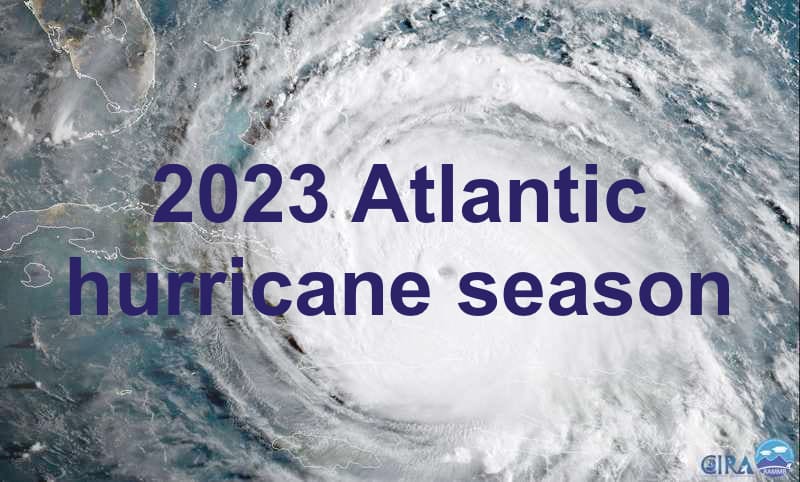CSU updates hurricane forecast, lifts number of major storms by one

Colorado State University’s tropical meteorology team led by Phil Klotzbach has issued an update to its forecast for the 2023 Atlantic hurricane season, increasing the number of hurricanes and major hurricanes it expects by one.
Previously, back in April, the CSU tropical forecast team had predicted 13 named tropical storms, 6 hurricanes and 2 major hurricanes for the 2023 Atlantic season, generating an accumulated cyclone energy (ACE) of 100.
That was below the near-term 1991 – 2020 average of 14 named storms, 7 hurricanes and 3 major hurricanes.
Now, the team has incorporated the one unnamed subtropical storm that formed in the Atlantic in January, but has also lifted each type of storm by one in its new forecast update.
So, on the first official day of the Atlantic hurricane season, the CSU forecast is for 15 named tropical storms (so 14, minus the one pre-season subtropical event), with 7 of these expected to become hurricanes (so now increased by one), and 3 major hurricanes of Category 3 strength or greater predicted (again an increase of one).
The Accumulated Cyclone Energy forecast is now pegged at 125, as of today’s update.
That leaves our Artemis average, across the forecasters we track, still calling for 14 named storms, 7 hurricanes and 3 major hurricanes, right on the near-term average.
The CSU team said there is a high-chance of a robust El Nino, but also noted the very warm tropical and subtropical Atlantic sea surface temperatures (SST’s) leave ample uncertainty in the forecasts.
Phil Klotzbach explained, “Most of the tropical and subtropical Atlantic is much warmer than normal, favoring Atlantic hurricane activity. This anomalous warmth is why CSU’s seasonal hurricane forecast has increased slightly, despite likely robust El Nino.”
He added that the, “El Nino onset is likely imminent.” Saying, “Currently there are very warm subsurface temperature anomalies and hints of another downwelling (warming) oceanic Kelvin wave.”
While the, “High chance of a robust El Nino is why CSU’s forecast is for a near-normal season, despite an extremely warm Atlantic.”
The CSU forecast team gives five analog years for the 2023 Atlantic hurricane season, being 1951, 1957, 1969, 2004 and 2006.
Klotzbach noted that these have been selected based on the likely El Nino and the above-normal SSTs in the tropical Atlantic for the August to October time period.
The team concluded in its forecast that, “While we anticipate a robust El Niño for the peak of the Atlantic hurricane season, the tropical and subtropical Atlantic have continued to anomalously warm to near-record levels. El Niño increases vertical wind shear in the Caribbean and tropical Atlantic, but the anomalous warmth in the tropical and subtropical Atlantic may counteract some of the typical El Niño-driven increase in vertical wind shear. The probability of U.S. major hurricane landfall is estimated to be near the long-period average.”
The CSU team gives its landfall probabilities, for a major hurricane to hit the coast during the 2023 hurricane season, as:
43% for the entire US coastline, right on the 1880–2020 average.
21% for the US east coast including Florida, again right on the average.
27% for the Gulf Coast from the Florida Panhandle to Brownsville, once again on the average.
In addition, the probability for a major hurricane tracking through the Caribbean is seen as 47%, once more right on the long-term average.
It’s aligned with the majority of forecasters, except the one outlier of the UK Met Office that called for a much more active season this year.
As a reminder, there remains discussion over the competing influences we will see during this hurricane season, of an El Nino on the one hand, versus very warm sea surface temperatures in the Atlantic on the other. CSU’s forecast highlights this uncertainty again, making watching the season as it develops critical for insurance, reinsurance and ILS market interests.
Track the 2023 Atlantic tropical storm and hurricane season on our dedicated page and we’ll update you as new information emerges.






